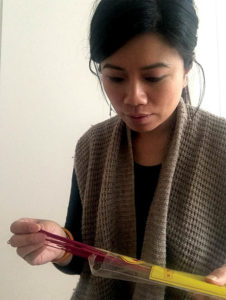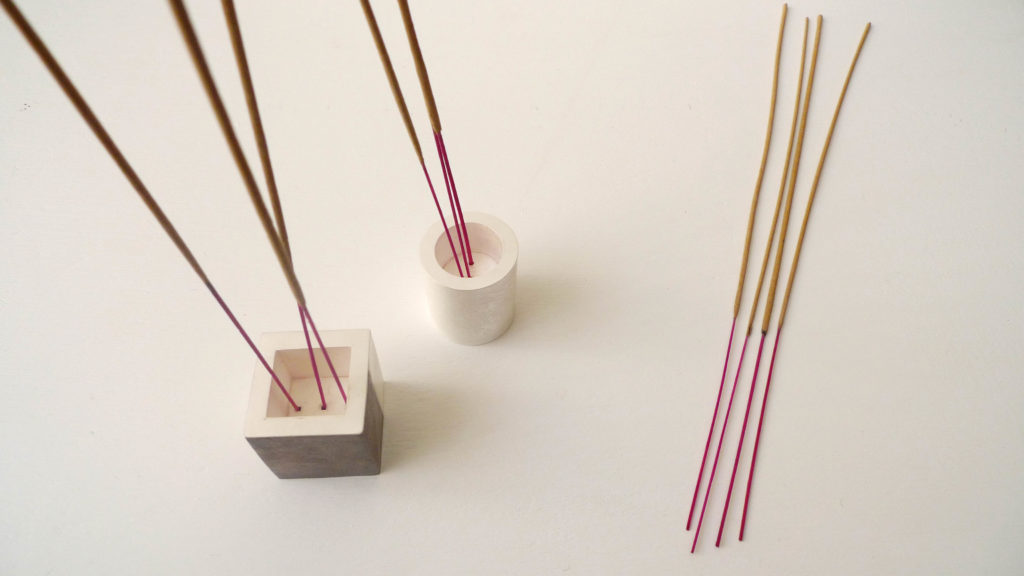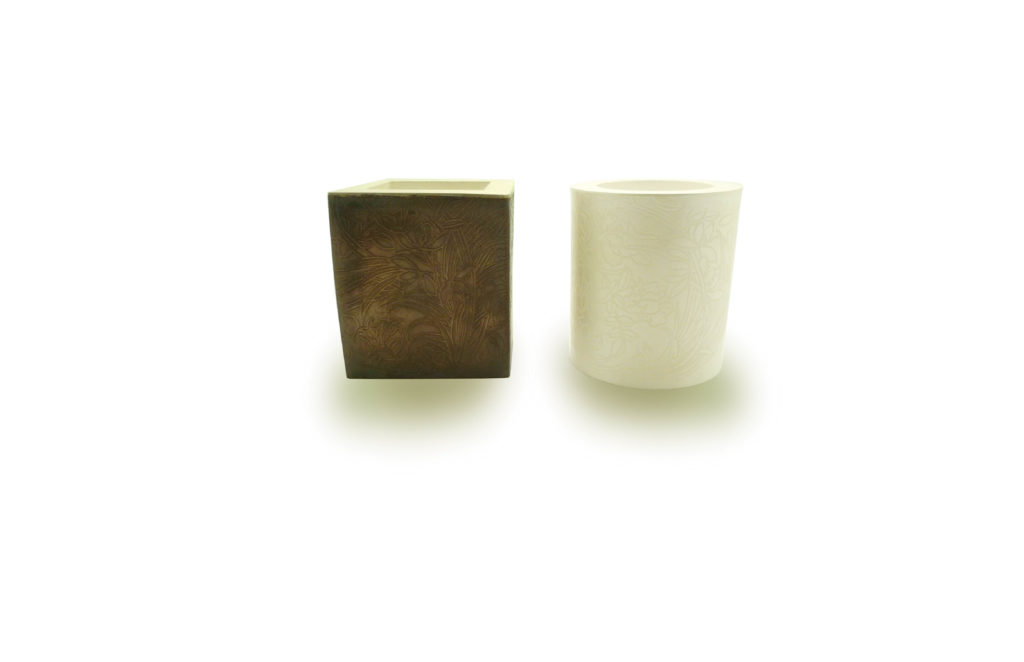- Bic Tieu, Portable Joss stick holder, 2017, “Sterling Silver, fine silver and copper; rectangle | 37 x 38 x 40 mm; circle | 36 diameter x 41h mm
- Bic Tieu, Portable Joss stick holder, 2017, “Sterling Silver, fine silver and copper; rectangle | 37 x 38 x 40 mm; circle | 36 diameter x 41h mm
In my family, the burning of Joss Sticks is practised as part of the act of praying to Buddha, various deities and ancestor. Often the prayers wished for are concerns centring around good health, prosperity and happiness. Once the prayer has been asked the joss stick would be placed into the incense holder. This incense holder is a large vessel which looks like a three-legged pot from the Chinese bronze metal age. In my family, my mother will ask for favours from both the deities and ancestors. These include well being of the family, stability and good fortune and other assistance. Sometimes in asking for these favours from the deities and ancestors, a promise is exchanged. For example, if the wishes come true, large offerings will be made to acknowledge that. This object/vessel (incense holder) acts as the “in between” dialogue for this. The aroma from the burning of the incense holder transport the wishes to the divine being.
My mother will ask for favours from both the deities and ancestors. These include well being of the family, stability and good fortune and other assistance. Sometimes in asking for these favours from the deities and ancestors, a promise is exchanged. For example, if the wishes come true, large offerings will be made to acknowledge that. This object/vessel (incense holder) acts as the “in between” dialogue for this. The aroma from the burning of the incense holder transport the wishes to the divine being.
In thinking about the Promise Project and research journey in the last 6 months, I came across Daruma. Daruma is the Japanese word for Bodhidarma. Bodhidarma was a Buddhist monk from the 5th/6th century and founder of Zen Buddhism in Japan. I was particularly interested in the modern talismanic papier mache form. These objects, traditionally purchased as talisman, have evolved into contemporary society as an expression to show concern for another person but also as a form of motivation. On receiving Daruma you would set up your goal and paint/draw his left eye. The promise to give Daruma both eye sight is achieved when the recipient completes the task or goal.
I sometimes attend the temple with my family on significant days. On these days the Chinese Buddhist communities would also be at the temple. What tends to happen is that the incense holder fills quickly. Volunteers working at the temples remove and dispose of these sticks.
Would it be more significant if I can bring my own Joss Stick holder which keeps the ashes of the incense after it has burnt out? Similar to Daruma, where there is a participatory involvement between the user and object, I have designed an object which enables the value of the transportation of the Joss Stick.
 I am a Sydney based jewellery and object designer and maker. I work across mediums and processes both traditional and contemporary which reflect oriental tangents within the contemporary landscape of design and technology. The documentation of my practice can be found on an online portfolio and conversations about my studio practice is linked via an online blog. Please find more information about me via the following links:
I am a Sydney based jewellery and object designer and maker. I work across mediums and processes both traditional and contemporary which reflect oriental tangents within the contemporary landscape of design and technology. The documentation of my practice can be found on an online portfolio and conversations about my studio practice is linked via an online blog. Please find more information about me via the following links:
www.bictieu.com
www.bictieustudio.com


